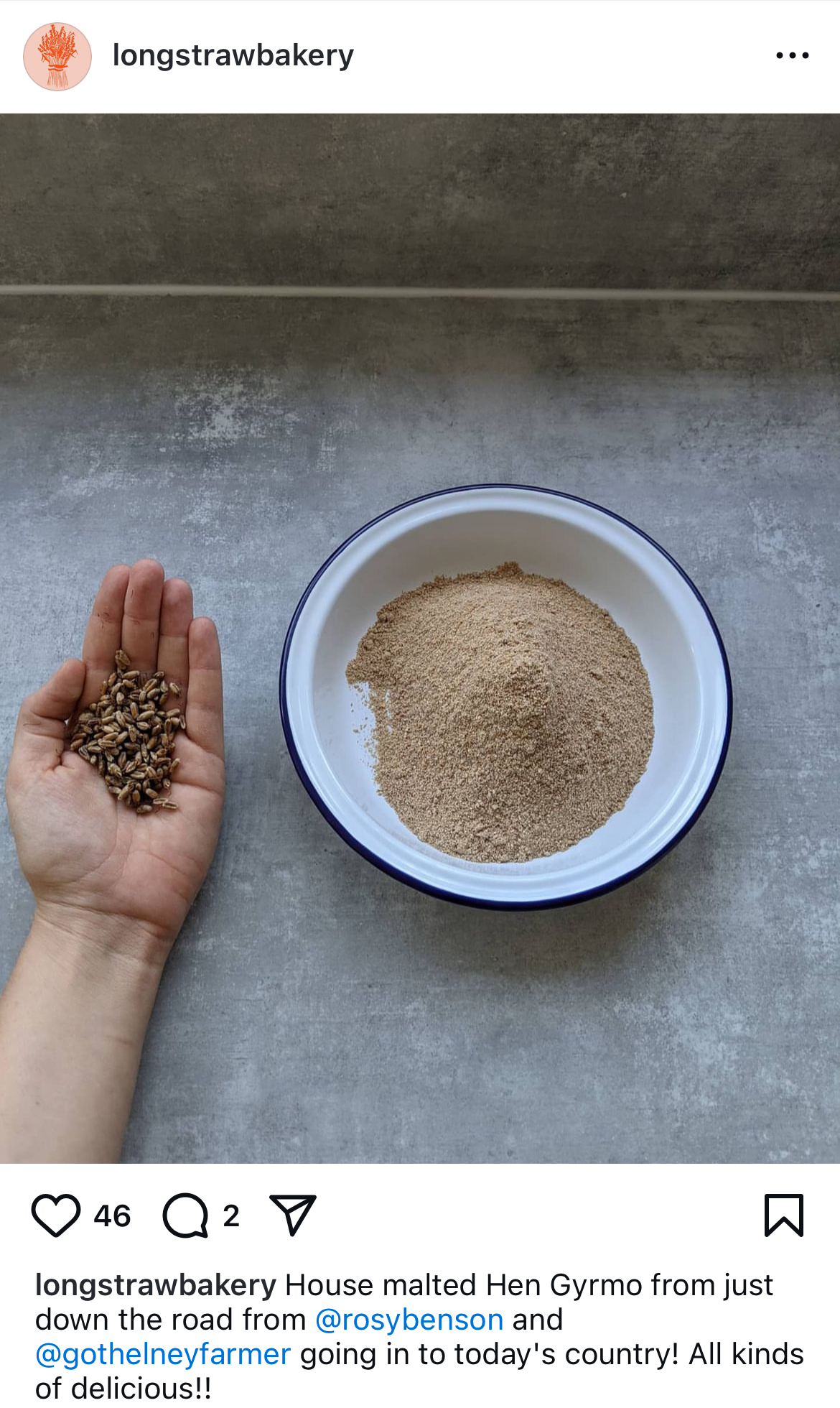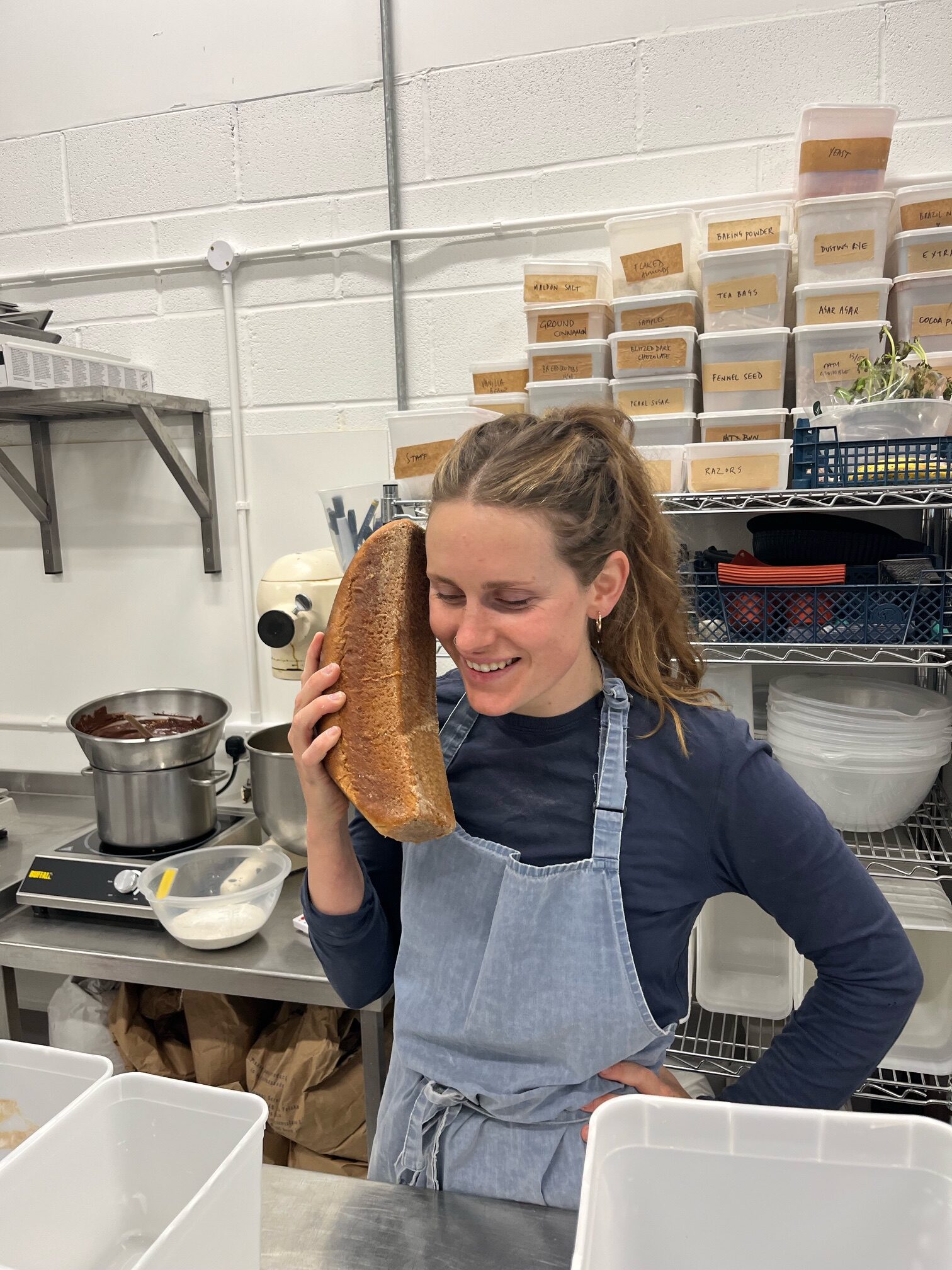Case Studies
Longstraw Bakery
Key Facts
“Our intention is to contribute to a regenerative, resilient and accessible food system from field to table, one loaf at a time.”
| Wiveliscombe, Somerset | |
| Established in | 2022 |
| Bakery | |
| Company type | Limited Company |
| N° of employees | 2 part-time bakers |
History and Values
Governance
Hub operations and Logistics
Community
What’s in the Future?
History & values
The journey
Firstly, who is Longstraw Bakery? Longstraw Bakery is James Cartwright and Frederica Bullough (Freddie), two passionate bakers who decided to start a business and embark on a journey together. But how did Longstraw Bakery come to be?
When asked about his journey as a baker, James tells us that he started as a home baker and that his passion grew as he developed his knowledge of milling through people he met sourcing his flour. He started working at Rye Bakery in Frome to get hands-on experience for a magazine he edited.
James and Freddie met at Field Bakery on the week of its opening, which is part of the South West Grain Network (SWG Network), which now provides them with flour. This was the start of the Longstraw Bakery story. Their desire to strengthen the area’s food network led them to join forces and start their own bakery in Wiveliscombe, Somerset. They believed that the local area was producing a lot of food, but most of the community did not necessarily have access to it, as it was sent elsewhere around the country, weakening the local food network. That’s why they want the bakery to be a way for people to access local produce.
Being part of the South West Grain Network allowed them to connect directly with millers and farmers, supplying them with the grain they needed. This helped them transition away from commodity grain as soon as they started making a surplus. Their passion, similar values, and drive to create a space for local people to access local produce made for the perfect recipe for starting Longstraw Bakery.

Photo of the Longstraw Bakery story, courtesy of James and Freddie.
Vision and values
Longstraw Bakery has solid values (listed below) and believes deeply in upholding them throughout their work. Setting up the bakery independently and learning on the go meant having strong core values was necessary. Additionally, they wanted to make sure they agreed on their shared values as a team before they started working together. These are the values they work to:
- To support organic/regenerative agriculture
- To keep food systems as small and local as possible
- To supply our community with locally grown/made nutritious food
- To ensure all parts of our supply chain are ethical and free from exploitation
- To make financial decisions that prioritise those four values rather than prioritising profit.
When it comes to the integrity of the ingredients, everything is sourced with the above core values in mind. They want to ensure that people get good, ethical, and sustainable food produced and sourced locally.
“Our intention is to contribute to a regenerative, resilient and accessible food system from field to table, one loaf at a time.”
Challenges and successes
One of the biggest challenges James tells was the first six months. He says that small businesses have as many hoops to jump through when they start up as bigger companies. A long list of administrative tasks (finding a space, food standard regulations, permits, etc.) took a lot of their time, with little money coming in, which made managing cash flow and keeping costs low difficult. Then came another challenge: sourcing ingredients. He tells us that sourcing is a long-term project that needs constant work. The aim is to ensure the ingredients sourced to make their bread and pastries champion local suppliers, growers and farmers. He was very clear in saying what was the most important to them:
“We really wanted to work with people who shared and were aligned with our values.”
Now, after its first year of trading, the bakery is profitable. In addition, they have a loyal customer base that travels up to 25 miles just to taste their delicious loaves. Learning on the go was a great way for them to build resilience.

Finding Open Food Network
Freddie and James knew that the only way they could make Longstraw work in the early days was to know in advance exactly how many orders they had each week. Finding the Open Food Network allowed them to use the pre-order system to gauge how much of each product to bake weekly, minimising waste and helping them better track their revenue and stock. As a rural bakery, they cannot rely on regular footfall.
“The pricing structure also really helped us when we were starting out. The OFN pricing structure gave us free use of the OFN platform when we were trading less than £500/month when we were starting up. If we’d used a more commercial product like Shopify, the fees would have been huge and prohibitive for what was initially a very small production run.”
Here are details of the OFN pricing structure. If you want to know more about the functionality of the Open Food Network, you can check out this user guide.
Governance
James and Freddie set up Longstraw Bakery as a limited company, both registered directors.
Freddie is the head baker, focused on recipe development, ingredient sourcing, and ingredient use. James is more focused on business management, taking on a more financial and administrative role. However, when they are at the bakery, they are both bakers; James makes bread, and Freddie makes pastry.
Decision-making and communication are fairly straightforward since it is just the two of them. They make decisions together as and when they arise based on their pre-agreed shared values.


Hub Operations
Finance and admin
The OFN platform is very helpful for keeping track of stock and revenue.
To manage their finances, they link their OFN system to Xero and pay an accountant to do their VAT and annual tax returns.
Order cycles and OFN shopfront
The order cycles are weekly, and customers have two days’ notice between the end of an order cycle and collection time. Customers order by 2 p.m. on Wednesdays for collection at the bakery every Friday from 12-4 p.m.
Customers go to the Longstraw shopfront on the Open Food Network platform and pre-order what they want. Based on that, James and Freddie can bake to order and bake extra for walk-in customers. They offer different types of loaves and delicious pastries.
Here are some examples of what you can find on their shopfront:
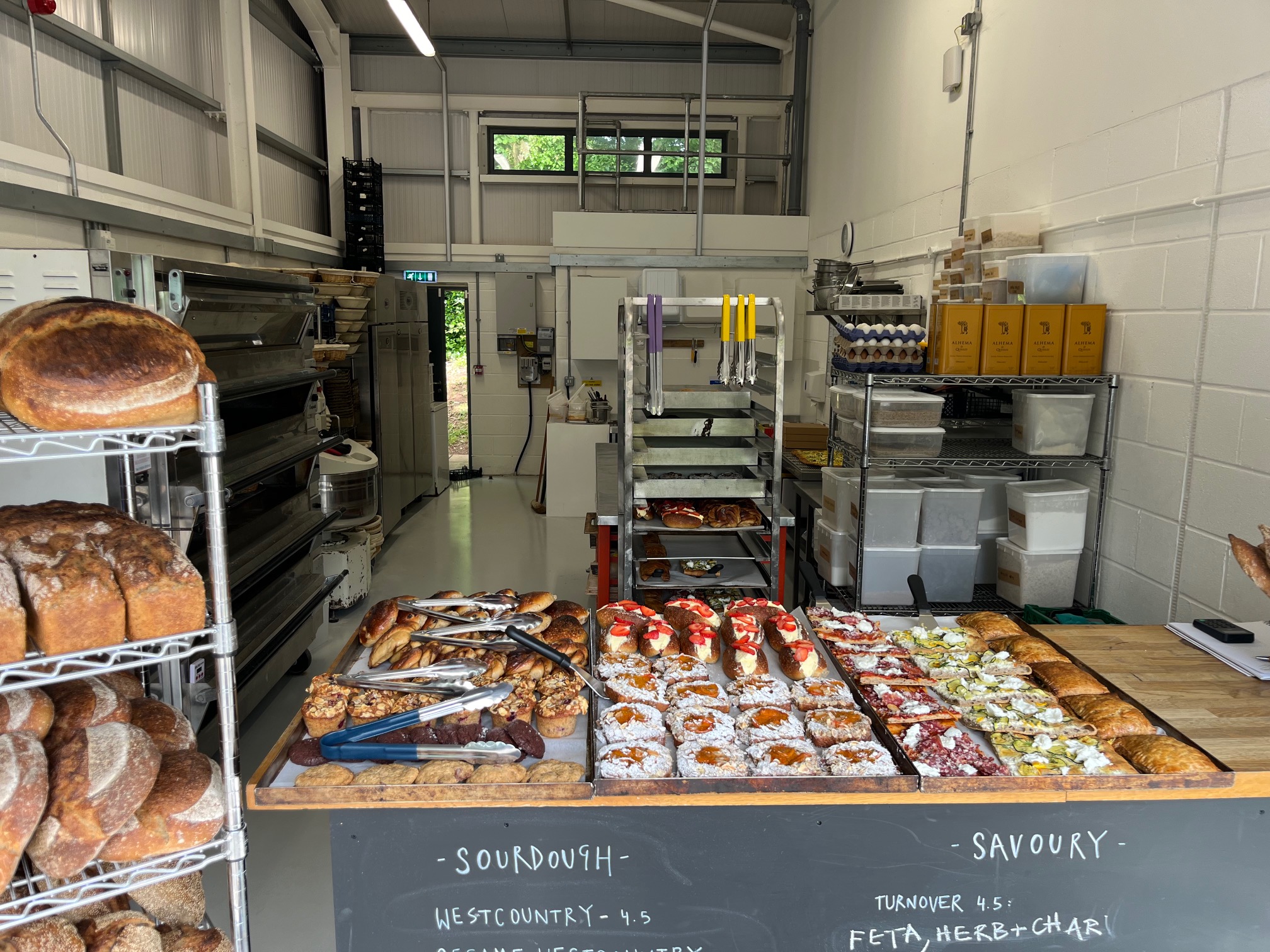
Bread
- Baguette
- Rye Malt Loaf
- Sesame Westcountry Loaf
- Wholemeal Sandwich Loaf
- Westcountry Extra Large Loaf
- Westcountry Loaf
- Oat and Linseed Porridge Tin Loaf
- Malted Wheat Choppy Rolls
Pastries
- Blackcurrant Financier
- Cardamom and Chocolate Bread and Butter Pudding Slice
- Blueberry Bostock
- Cardamom Bun
- Chocolate Rye Cookie
- Cinnamon Bun
- Double Chocolate Chip Cookie
Stock management
James and Freddie have a stock of dry goods at the bakery with a relatively long shelf life.
Regarding fresh milled goods, they tend to order once a month to minimise storage time and keep track of stock levels. They usually order from 500 to 600 KG of flour each month.
Dairy products are ordered weekly, and everything is meticulously labelled and kept on rotation. When it comes to other perishables, such as fruits and vegetables, James tells us that the key is to process everything efficiently. This is done by using all the perishable products as soon as possible and making their own preserves. For example, some pastries will require jam, purees, or maybe even pickled fruits, and they will make their own by using the fruits they have in stock. Everything is made from scratch.
The values mentioned above guide how they source their ingredients. However, it isn’t always possible to tick every box. They are always looking to improve and work with suppliers who are as transparent as possible in their procurement.
Here is the list of suppliers used:
- Ivy House Dairy (milk, cream)
- Westcombe Dairy and Charcuterie (cheese, charcuterie)
- Gothelney Farm (flour)
- Field Mill (flour)
- Gilchesters Organics (flour)
- Cann Mills / Stoates Flour (flour)
- David Yiend (eggs)
- Stream Farm (eggs)
- SUMA (store cupboard, dry goods)
- Hodmedods (flour, pulses, grains)
- Xoco Gourmet (all chocolate)
- New Dawn Traders (olive oil, almonds, panela sugar)
- Riverford (fruit)
- Ray’s Veg (veg)
- Landwich (veg)
- Exmoor Blueberries (soft fruit)
“We also get a lot of fruits from our customers to use in our products and we trade for bread and pastry.”
Tools and equipment
Here is a list of the key equipment used at the bakery:
- The most essential piece of equipment is their oven, which they did not have when they first opened. They used to bake out of two little Rofco’s, which are notoriously temperamental and which only fit 12 loaves at a time. Now they have a Tom Chandley oven. It has five decks (18 loaves per deck), which increases productivity significantly.
- An Italian mixer (80 KG capacity) as well as an old Hobart mixer
- Two Foster fridges. One double fridge for bread and one single fridge for pastry
- Buffalo Induction hobs
- Brecknell Scales
- Tubs and tins from Brook and BakeryBits
Community
Customers
Customers come from the local area, from businesses to local households—33% Wholesale and 77% Retail.
They have 15 regular wholesale customers, such as farm shops, gastro pubs, cafes, and a boutique hotel. Wholesale orders range from 10 loaves for caterers using their bread for private events to cafes that take 50 + loaves and 20 buns weekly. James tells us that both retail and wholesale sales fluctuate from week to week.
Everyday at the bakery
Since they are a team of two, it is easy to have honest conversations. James tells us that when they are at the table shaping the bread, they take the opportunity to unpack and discuss the week and what has been happening at the bakery. This is the perfect time for them to plan and resolve issues or disagreements.
Communications and Marketing
Marketing tools and streams
In order to build and maintain a solid customer base, they have set up an Instagram account and a newsletter using MailChimp.
What works best
What is working best is the newsletter. It has been a great way for them to communicate with their audience through storytelling and updates about their products or some of their suppliers. So far, they have managed to gather 450 subscribers. By getting a newsletter out a couple of times a week, which includes more details about their sourcing, they ensure that people know what they are up to and grow loyal customers by bringing them on board with them on their journey.
Events
Participating in local events that align with their ethos is an excellent way for them to connect with the community and find new partnerships. For example, they have participated a few times in Organic Food Farm events and other pop-up opportunities.
They hope to have the capacity in the future to create more workshops and educational events.
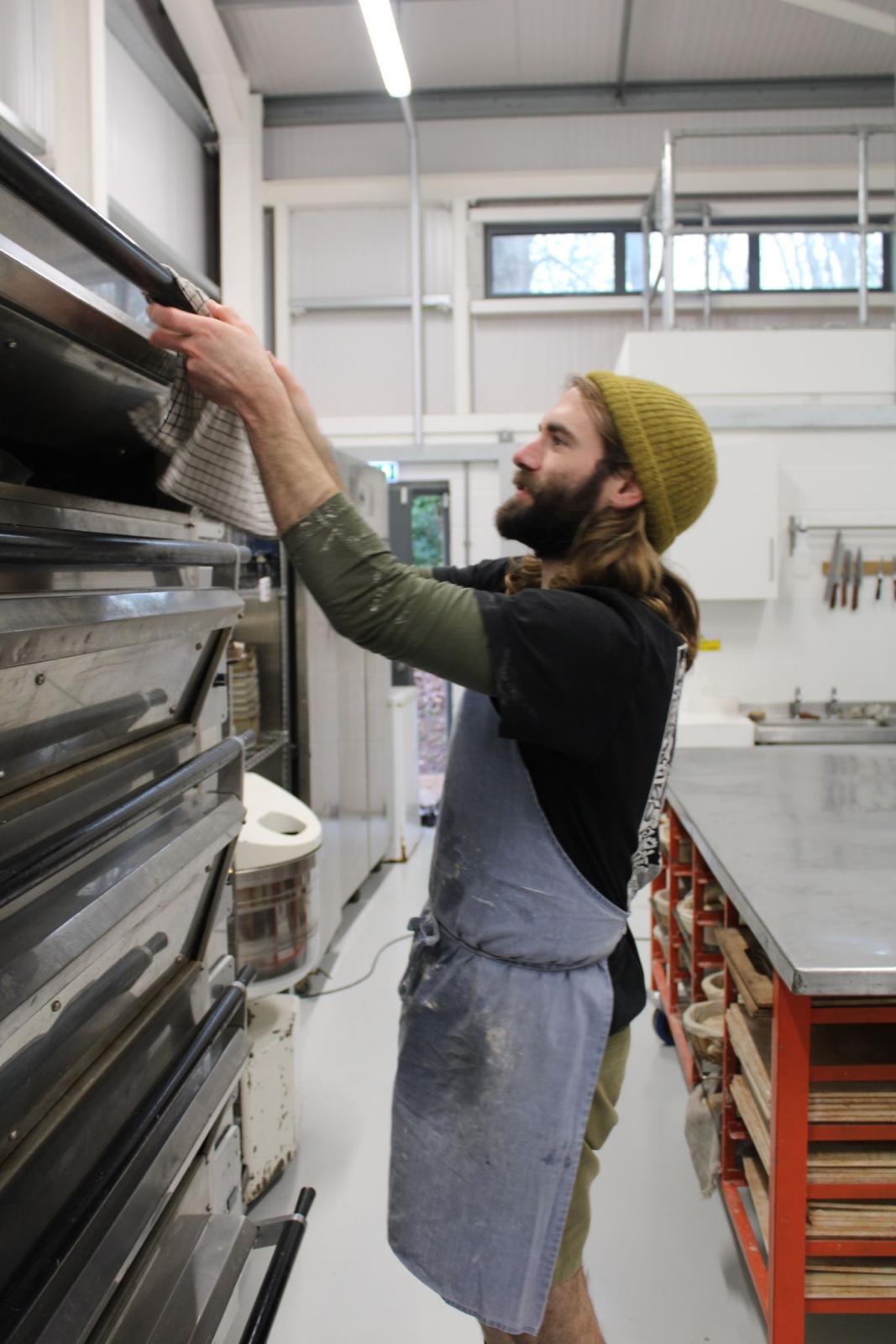
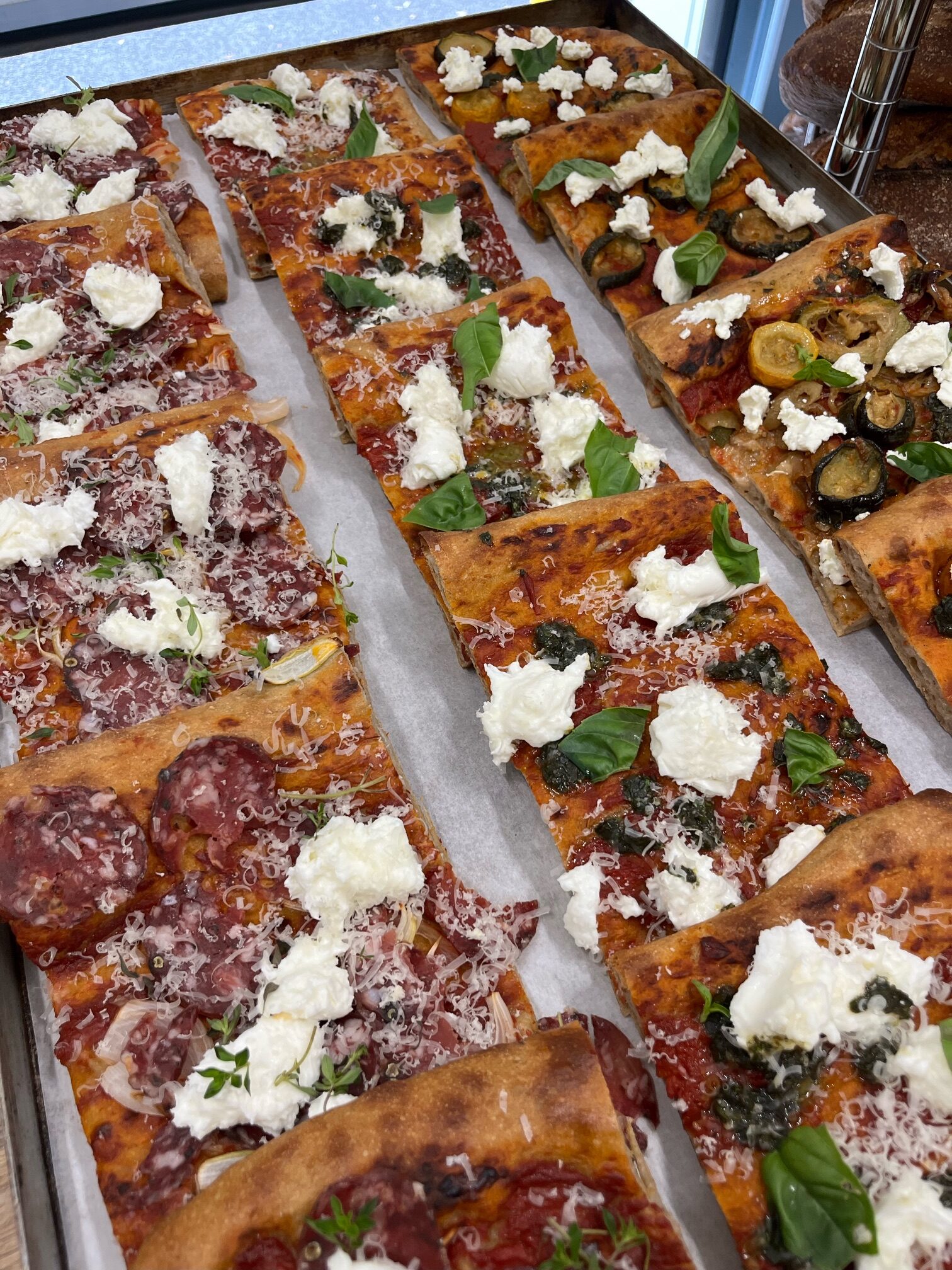

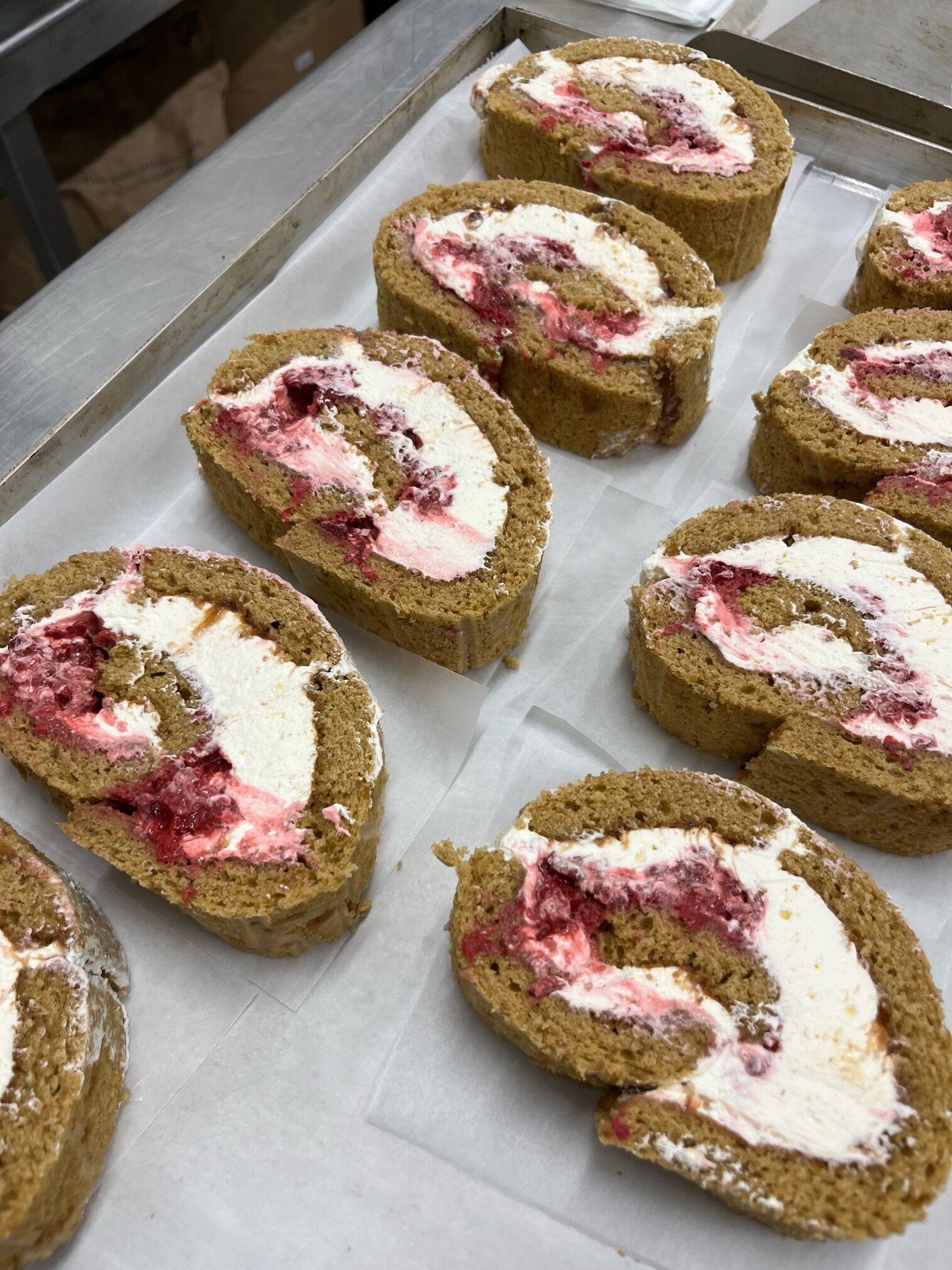
What is in the Future? What is the Long-term Goal?
Their primary goal is to grow the business to sustain them both as a sole income source. They want to do that while maintaining their values and working hours, which allows for a balanced work/family dynamic.
“We both reject the idea that you have to break yourself to run a business and would like to keep that idea in focus as we grow.”
Other long-term goals include opening more regularly in the new year to serve a growing wholesale demand and starting to run workshops and teaching sessions.
They serve a community of 3000 people in their immediate area, and their objective is to reach as many people from that community as possible in the immediate future.
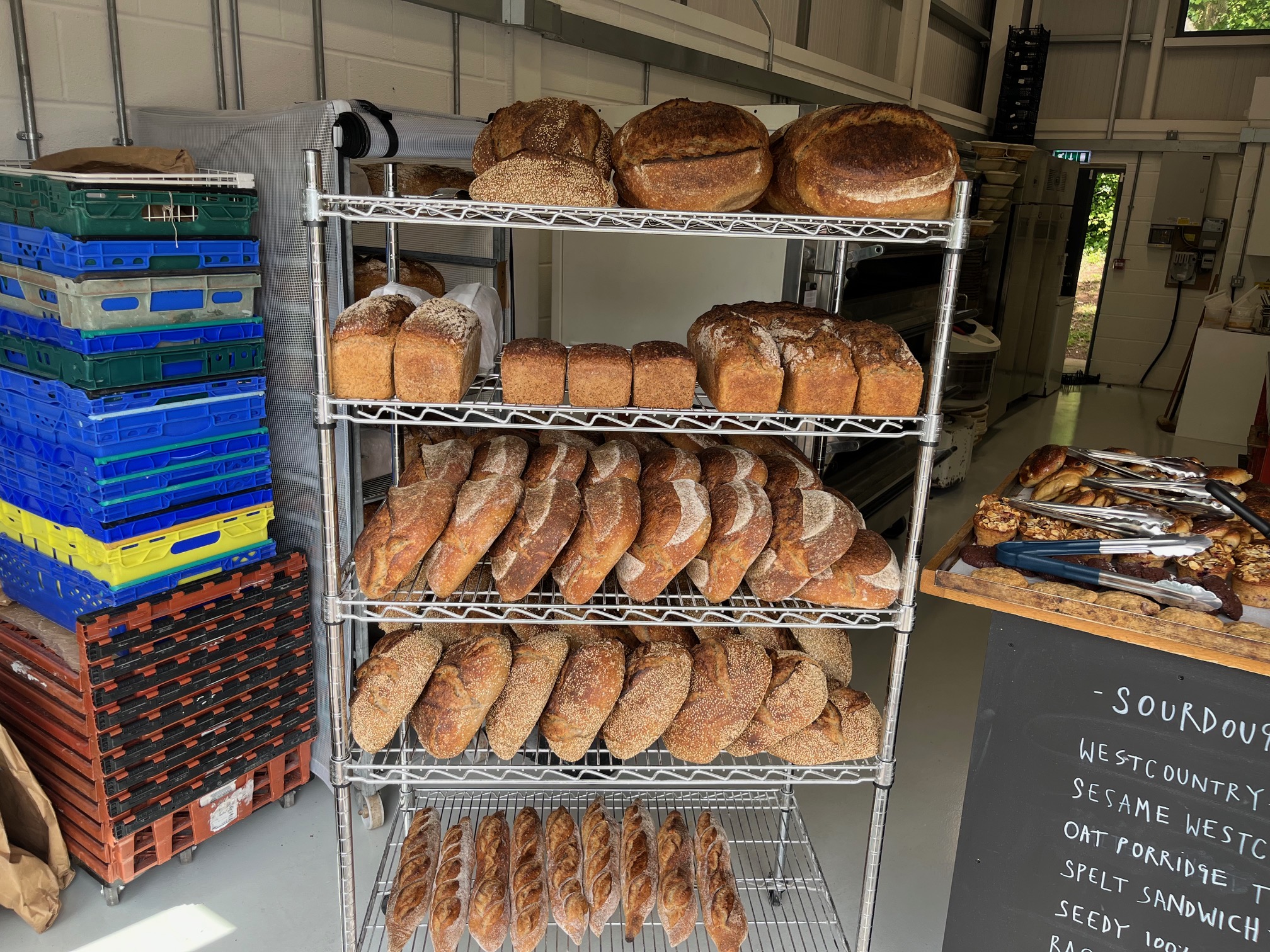
Thoughts on food sovereignty
As mentioned in the bakery’s history and background, James and Freddie want to create a place for the local community to access local food. That’s why reinforcing an alternative to the commodity market is essential. Working with the South West Grain Network has been crucial in growing the market for non-commodity flour in their area. It has also helped them insulate themselves from the market shocks that come with buying commodity ingredients.
They do not believe in supporting the commodity industry, as it has links to modern slavery, exploitation, destruction of nature, and other dangerous things for people and the planet. As a small business, they believe holding those values close as a food producer is important because it still impacts their immediate community, even if small.
When sourcing ingredients from further afield, it is important to ensure that the suppliers align with our core values. This means ensuring that growers are paid a living wage for their produce, which is why they use organic or fair trade suppliers (some uncertified/in transition) and, when possible, both. For example, ingredients like chocolate, which they get from Xoco Gourmet, are very serious, not only about traceability but about paying the farmers above fair trade prices and trade directly. New Dawn Traders, using the Open Food Network, source all of their goods from small-scale agro-ecological growers in Spain, Portugal, Brazil and the Dominican Republic and then transport them back to the UK in sailing boats. Check out their website to find out more about their story.
All images are courtesy of Longstraw Bakery

